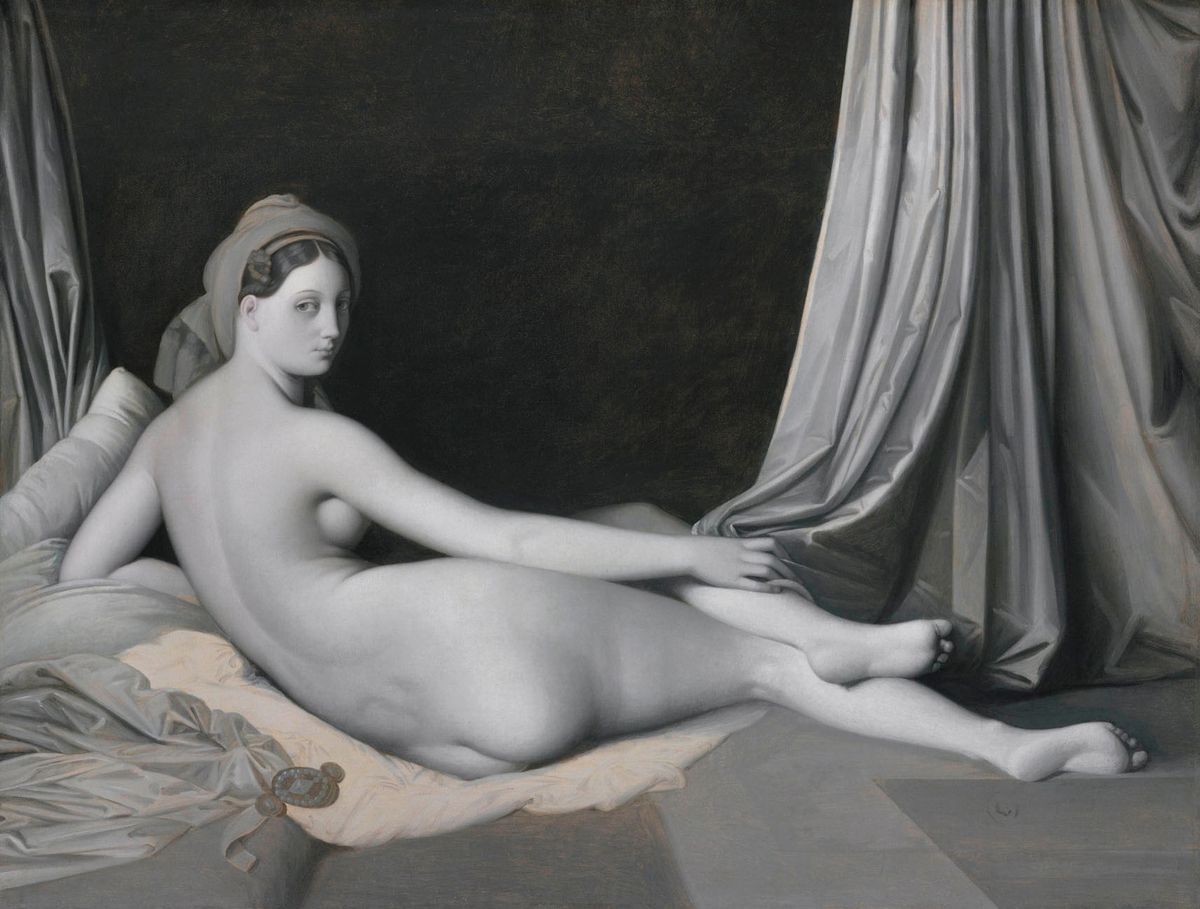Nothing is quite what it seems in the National Gallery’s exhibition, Monochrome: Painting in Black and White (until 18 February 2018). Odalisque in Grisaille (around 1824-34) by Jean-Auguste-Dominique Ingres and his workshop is a lesson in colours that can stand in for greys: the Odalisque’s ear is powder pink while the shadow her body makes is sky blue, even though the work is meant to be grisaille. Jacob de Wit’s Jupiter and Ganymede (1739) looks like a bas-relief but is oil on canvas; Hendrick Goltzius’s Without Ceres and Bacchus, Venus Would Freeze (1606) was once thought by audiences to be a print but is in fact a drawing; while Jan van Eyck’s The Annunciation Diptych is an “exquisite [oil on panel] diptych imitating sculpture” says the show’s co-curator, Lelia Packer. The exhibition includes more 60 works by artists such as Titian, Picasso, Gerhard Richter and Marlene Dumas, who have used black and white, grisaille or tones of a single colour in their work. The show’s final piece is Olafur Eliasson’s installation, Room for one colour (1997). The empty room is bathed in yellow light that causes “viewers to experience a world drained of colour, creating the impression they have just stepped into a black and white film”, Packer says.
Natural Selection by the artist Andy Holden and his ornithologist father Peter Holden, was due to close this weekend but has now been extended for another three weeks (until 26 November). The Artangel commission is on show at the former Newington Library in south London and sees the duo take on the art of nest-making and egg collecting in a multimedia installation. Their three-screen film, A Natural History of Nest Building (2017), guides viewers from simple blackbird nests to the elaborate creations by the bowerbird. The latter are not shelters or nests but instead “very close to our own concept of art”, says Andy Holden in the film. The artist added, in person, that the birds have to make “tons of decisions” and that the meticulous and unique creations are “akin to the art impulse” in humans. In the basement of the former library—an apt location for the archival nature of the show—the second part of the exhibition explores the once aristocratic, but now illegal, pursuit of art of egg collecting.
Marie Jacotey’s Morning Defeats (until 5 November) exhibition at the Hannah Barry Gallery sees the artist move on from her previous smaller works—like colourful comic book scenes from a noir film—into more expansive pieces, such as a large fabric installation covered in illustrations that splits the gallery space. The enigmatic characters (are they lovers? are they lonely?) and slogans (“when dawn comes loaded with fears”) seen in previous pieces are still present but the new works are bigger and, at times, almost abstract. There are illustrations of the layered textures produced by pictures taped onto walls and depth planes of buildings and the outdoors are flattened. The scenes and characters in the works remain a mystery, at once familiar but unrecognisable. A book, titled Nights of Poor Sleep, has been published to accompany the exhibition.


